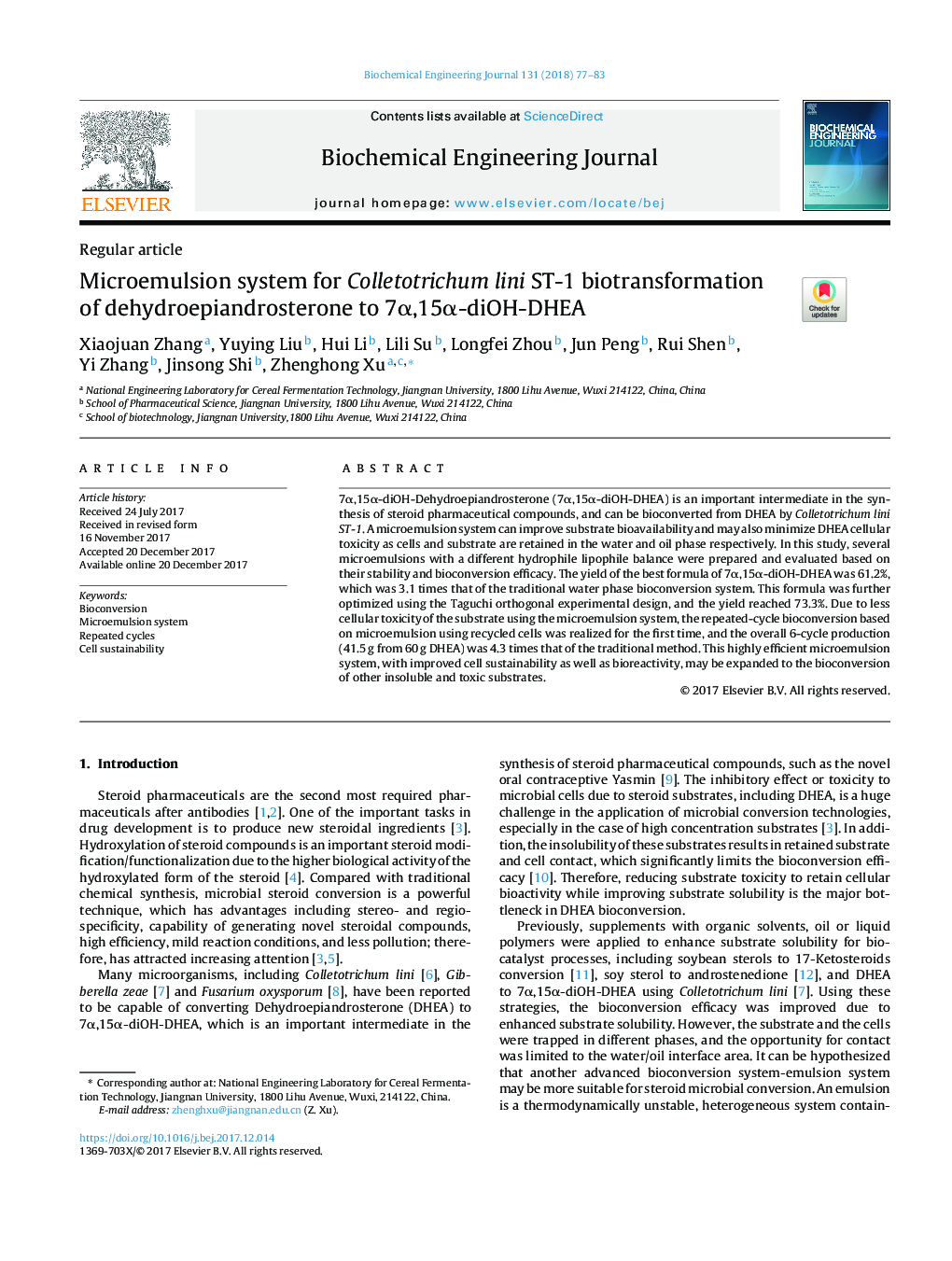| Article ID | Journal | Published Year | Pages | File Type |
|---|---|---|---|---|
| 6482286 | Biochemical Engineering Journal | 2018 | 7 Pages |
Abstract
7α,15α-diOH-Dehydroepiandrosterone (7α,15α-diOH-DHEA) is an important intermediate in the synthesis of steroid pharmaceutical compounds, and can be bioconverted from DHEA by Colletotrichum lini ST-1. A microemulsion system can improve substrate bioavailability and may also minimize DHEA cellular toxicity as cells and substrate are retained in the water and oil phase respectively. In this study, several microemulsions with a different hydrophile lipophile balance were prepared and evaluated based on their stability and bioconversion efficacy. The yield of the best formula of 7α,15α-diOH-DHEA was 61.2%, which was 3.1 times that of the traditional water phase bioconversion system. This formula was further optimized using the Taguchi orthogonal experimental design, and the yield reached 73.3%. Due to less cellular toxicity of the substrate using the microemulsion system, the repeated-cycle bioconversion based on microemulsion using recycled cells was realized for the first time, and the overall 6-cycle production (41.5â¯g from 60â¯g DHEA) was 4.3 times that of the traditional method. This highly efficient microemulsion system, with improved cell sustainability as well as bioreactivity, may be expanded to the bioconversion of other insoluble and toxic substrates.
Keywords
Related Topics
Physical Sciences and Engineering
Chemical Engineering
Bioengineering
Authors
Xiaojuan Zhang, Yuying Liu, Hui Li, Lili Su, Longfei Zhou, Jun Peng, Rui Shen, Yi Zhang, Jinsong Shi, Zhenghong Xu,
